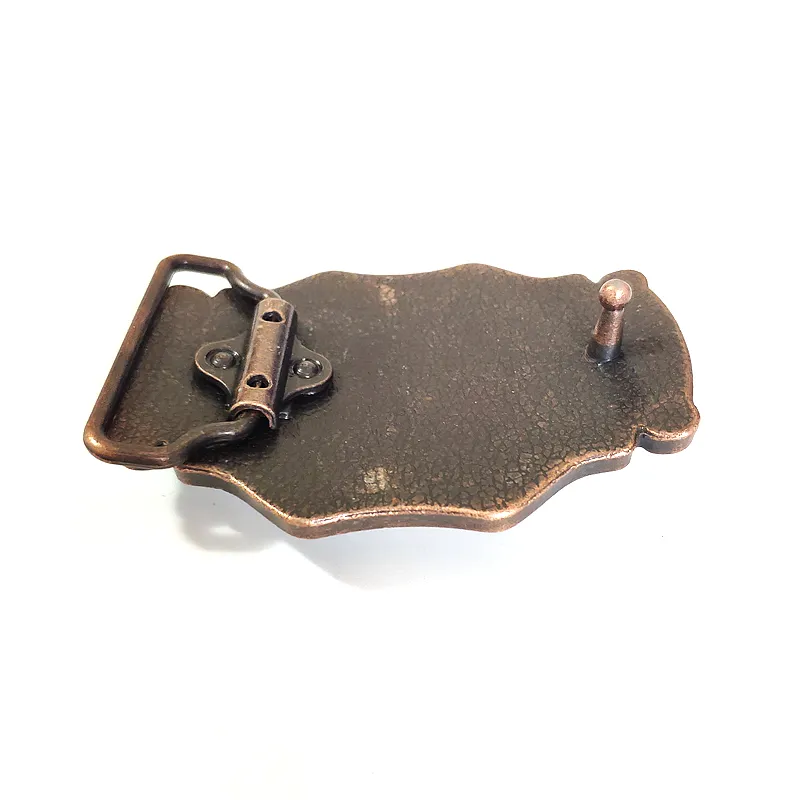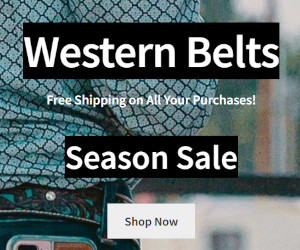
A belt is not merely a functional accessory; it’s a statement piece that can elevate your entire outfit. And at the heart of every great belt is the buckle. Choosing the right belt buckle is a crucial step in curating your style, as it can add personality, flair, and functionality to your wardrobe. In this comprehensive guide, we’ll explore the world of belt buckles, covering factors such as materials, styles, sizes, shapes, and maintenance, to help you select the perfect buckle that complements your fashion sense and meets your practical needs.
The Significance of Choosing the Right Belt Buckle
Before we delve into the specifics of choosing a belt buckle, it’s essential to understand why this choice matters:
- Style Statement: The belt buckle serves as a focal point of your outfit, allowing you to express your personality and fashion sense.
- Versatility: By owning a variety of belt buckles, you can transform a single belt strap into multiple looks, saving you money and closet space.
- Functionality: These are designed for different purposes, from everyday wear to formal occasions to outdoor adventures. The right buckle enhances both style and utility.
- Comfort: A well-fitting buckle ensures your belt is comfortable to wear, providing ease of use and adjustability.
Now, let’s explore the factors to consider when selecting the perfect belt buckle.
Factors to Consider When Choosing a Belt Buckle
1. Materials
These come in various materials, each offering unique aesthetics and durability:
- Metal: Metal belt buckles are classic and timeless. Common metals used include stainless steel, brass, silver, and gold. They can range from minimalist to ornate designs.
- Plastic or Resin: Plastic or resin buckles are lightweight and often found on casual belts. They come in a wide range of colors and designs.
- Wood: Wooden buckles offer a natural and rustic look. They are typically used for casual or bohemian-style belts.
- Leather: Leather-covered belt buckles provide a cohesive look when paired with leather belts. They are often used for Western-style or cowboy belts.
Choose a material that aligns with your style and the occasions you plan to wear the belt for. Metal and leather buckles are versatile and suitable for various settings.
2. Styles
Belt buckles come in a plethora of styles, allowing you to find one that resonates with your personality and the image you want to project:
- Classic: Classic are simple and timeless, making them suitable for formal and everyday wear. They usually feature clean lines and minimal embellishments.
- Western: Western-style buckles often have intricate designs, engravings, or cowboy motifs. They are a great choice for adding a touch of rugged elegance.
- Military: Military-style buckles are functional and sturdy, designed for durability and ease of use. They are often used for tactical or outdoor belts.
- Novelty: Novelty buckles can be whimsical and fun, featuring various themes, from animals to pop culture references. They’re an excellent choice for expressing your personality.
- Slide or Plate: Slide or plate buckles are sleek and modern, with a flat profile. They are often used for dress belts and are easy to adjust for a perfect fit.
Consider your personal style and the occasions where you’ll wear the belt to choose a buckle style that suits you.
3. Sizes and Shapes
The size and shape of the belt buckle should harmonize with the width and style of the belt strap:
- Width: The width of the buckle should match the width of the belt strap. Common widths are 1 inch, 1.25 inches, and 1.5 inches. Make sure they are compatible for a secure fit.
- Shape: Belt buckles come in various shapes, including rectangular, oval, circular, and novelty shapes. Choose one that complements your style and the belt strap.
- Proportion: Consider the proportion of the buckle to your body size. Smaller buckles may look overwhelmed on larger frames, while oversized buckles can be distracting on smaller frames.
4. Mechanisms
The mechanism of the belt buckle determines how it fastens and adjusts. Common mechanisms include:
- Prong Buckle: Prong buckles have a metal prong that fits into holes on the belt strap. They are adjustable and secure.
- Ratchet Buckle: Ratchet buckles have a track system that allows for precise and customizable adjustments. They provide a clean and minimalist look.
- Clip or Slide Buckle: Clip or slide buckles have a clasp mechanism that secures the belt without holes. They offer a clean, streamlined appearance and are easy to adjust.
Consider the ease of use and adjustability when selecting a buckle mechanism.
5. Care and Maintenance
Proper care and maintenance ensure your belt buckle remains in excellent condition:
- Cleaning: Clean metal buckles with a soft, damp cloth to remove dirt and fingerprints. Leather-covered buckles may require leather-specific cleaning products.
- Storage: Store your belts with buckles unbuckled to maintain their shape. Keep them in a cool, dry place away from direct sunlight.
- Polishing: Metal buckles can benefit from occasional polishing to maintain their shine. Use a metal polish appropriate for the type of metal.
- Avoid Scratches: Be mindful of sharp objects or abrasive surfaces that can scratch or damage your belt buckle.
- Rotate Usage: If you have multiple belts with different buckles, rotate their usage to prevent excessive wear on a single buckle.
In Conclusion
Choosing the right belt buckle is an art that combines style, functionality, and personal expression. By considering factors like materials, styles, sizes, shapes, and maintenance, you can select belt buckles that enhance your outfits, fit comfortably, and reflect your unique personality. A well-chosen belt buckle not only holds your pants up but also adds a touch of individuality and flair to your overall look. Whether you opt for a classic metal buckle, a Western-style statement piece, or a novelty design that speaks to your interests, the perfect buckle can make a world of difference in your fashion ensemble.


